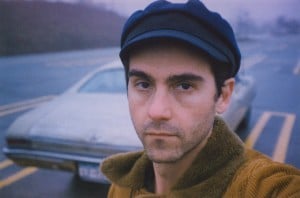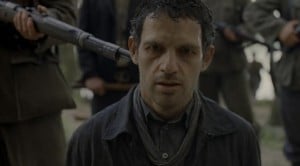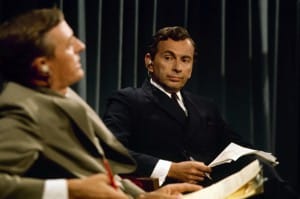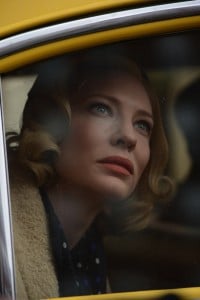
 Here are ten indie films that have stayed in my memory this year. Some were viewed at festivals and are still hoping for a release, others started out as indies (CAROL and AMY) but have rapidly gained cult status and heading for the Oscars.
Here are ten indie films that have stayed in my memory this year. Some were viewed at festivals and are still hoping for a release, others started out as indies (CAROL and AMY) but have rapidly gained cult status and heading for the Oscars.
It’s not a definitive list: many of the films I’ve enjoyed the most this year are from the classics. Martin Scorsese’s Polish selection were my biggest discovery. Some have something new or different to enjoy with every viewing: I’ve changed too in the decades since I first saw them: BARRY LYNDON; THE TENANT and CHINATOWN are three that spring to mind. And there are Comedies that make me laugh again and again: Woody Allen’s SMALL TIME CROOKS and Peter Bogdanovich’s WHAT’S UP DOC. So here are my favourites for 2015 –
COUNTING | Director: Jem Cohen | 111mins Documentary US
‘Sleeping dogs; Waking cats; Straws that break the camel’s back/ The subtle urban portraiture of Jem Cohen’s work could be described as tragi comedy in motion. His recent drama MUSEUM HOURS was a hit amongst the arthouse crowd but COUNTING is a straightforward documentary that explores the peripatetic fillmaker’s wanderings through New York, Moscow, St Petersburg, Istanbul and an unknown city in the Middle East (Islamabad?).
Taking the form of 15 different but interconnected fragments, a lose narrative gradually emerges that points to a World where everyone is in contact but no one is actually engaging; people are talking but no one is listening. So COUNTING feels like an intensely personal take-down of our contemporary cities where animals and people are increasingly bewildered and alienated from their urban surroundings.
Continually leavening his film with ironic commentary that juxtaposes images of alienated people, cats or dogs photographed against the urban landscape often with poignantly amusing signs, his acute observations reflect the state of play in contemporary society. Whether faintly amusing or poignantly sad, they put Terrence Malick’s saccharine Hallmark greetingcard platitudes to shame, making Jem Cohen a unique and inventive director who deserves more acclaim. A treasure not to be missed, but not his best outing. MT. reviewed at BERLINALE 2015
 THE ASSASSIN | Director: Hsiao-hsien Hou | Cast: Qi Shu, Chen Chang, Satoshi Tsumabuki | 12omin Taiwanese Drama
THE ASSASSIN | Director: Hsiao-hsien Hou | Cast: Qi Shu, Chen Chang, Satoshi Tsumabuki | 12omin Taiwanese Drama
Taiwanese director Hsiao-hsien Hou has brought a Palme d’Or probable to the Croisette with his stunning drama THE ASSASSIN. This is a serious and sumptuously composed masterpiece – in the true sense of the word. Hou brings a sense of uncompromising formal brilliance to the wuxia material. THE ASSASSIN is a work of spiritual resonance and historical importance, it is also visually orgasmic.
Set during the Tang dynasty, the story opens as a young girl played by Shu Qi undergoes training to be an assassin. But her female sympathies stand in the way of her killing instinct and after failing an important mission, she is sent back to her hometown. Some time later, she is again tasked with killing an important governor (played by Chang Chen) who is questioning the Emperor’s authority. The task involves a moral twist: not only is the governor her cousin, but also her first love.
Mark Lee Ping-Bing’s stunning visuals create a sparkling jewel box in every frame. The magnificent landscape showcase lush forests, mist-filled mountains and precipitous gorges in this remote and the often hostile terrain. But this is not the classic martial arts slasher movie and the killing sprees are spare and discrete. This is the domain of the highly disciplined and spiritually-trained Grandmasters, experienced recently through the work of Wang Ka Wai. But Hou’s martial arts sequences have their own brutal and breathtaking beauty and are nonetheless powerful for their distinct lack of gratuitous blood-letting. There is a serene and graceful delicacy to this filmmaking which is both tear-wellingly beautifully and satisfying austere. A sequence involving black magic is particularly sinister, making THE ASSASSIN a captivating masterpiece in elegance and restraint, holding his head proudly in the starry firmament of Taiwanese filmmaking. MT | REVIEWED AT CANNES 2015
 EMBRACE OF THE SERPENT | Director: Ciro Guerra | Cast: Nilbio Torres, Antonio Bolivar, Yauenkü Migue | 122min | Adventure Drama | Colombia
EMBRACE OF THE SERPENT | Director: Ciro Guerra | Cast: Nilbio Torres, Antonio Bolivar, Yauenkü Migue | 122min | Adventure Drama | Colombia
Colombian writer|director Ciro Guerra’s third feature is a visually stunning exploration to a heart of darkness that echoes Miguel Gomes’ Tabu or Werner Herzog’s Cobra Verde or even Nicolas Roeg’s Belize-set drama of that name.
A backlash on the negative impacts of organised Religion and Colonialism EMBRACE OF THE SERPENT‘s slow-burn intensity has a morose and unsettling undercurrent that threatens to submerge you in the sweaty waters of the Amazon River whence its token German explorer, Theordor Koch-Grunberg (Jan Bijvoet) meanders fitfully in search of a rare and exotic flower with restorative powers.
Impressively mounted and elegantly shot in black and white (by DoP David Gallego) this arthouse masterpiece was dreamt up by scripters Guerra and Jacques Toulemonde, who base this imagined drama, told in parallel narrative, on the diaries of two explorers travelling through the Colombian jungle in the early part of last century between 1900 and the 1940s. Theodor and Evan (Brionne Davis) are guided by the rather fierce figure of a shaman called Karamakate (played by Nilbio Torres and later by Antonio Bolivar) the sole survivor of a native tribe which perished due to invasion.
Karamakate knows the intricate tribal nuances and the subtleties of the local fauna but is filled with latent hatred for the explorers who he blames for destroying his forefathers. Despite this he cures Theodor, virtually bringing him back to life with potions distilled from the vegetation which is alarmingly shot through a pipe at high speed into the German’s nostrils. With the Shaman they encounter a fallen Catholic mission and a poor worker with a severed arm who begs to be put out of his misery.
For all the magnificent beauty of this wildly lush and desolate forest with its flowing river, there are signs of human destruction. EMBRACE OF THE SERPENT scored by Carlos Garcia’s haunting ambient soundtrack this is a peaceful, if slightly overlong, meditation on the havoc man has wreaked on lost humanity and the planet. MT | WINNER OF THE CICAE AWARD AT CANNES FILM FESTIVAL 2015 | CIRO GUERRA
 SLEEPING GIANT | Director: Andrew Cividino | 89min Canadian Drama
SLEEPING GIANT | Director: Andrew Cividino | 89min Canadian Drama
Andrew Cividino lampoons and laments the male of the species in his piquant and delightfully-observed rites of passage debut feature, SLEEPING GIANT. Making great use of the magnificent ‘big country’ landscapes of his native Ontario, Cividino is another starlight trouper from the fabulous galaxy of contemporary Canadian filmmakers. This is a teen drama with surprisingly universal appeal that will appeal to the arthouse crowd of all age-groups.
Quietly incisive yet monumentally moving, SLEEPING GIANT explores the angst-ridden adolescent awakening of three teenage boys who joke and jossle together one sun-drenched summer in Lake Superior, that starts predictably bright but ends in a dark and frightening place. A razor-sharp script is matched with cutting-edge performances from newcomers Jackson Martin as Adam, Riley (Reece Moffett) and Nate (Nick Serine).
Adam is a thoughtful, intelligent boy with a face as pure as milk. Spending the summer with his parents in their luxurious lakeside cabin, he strikes up a friendship with hell-raiser cousins Riley and Nate that soon starts to challenge his perceptions of his parent’s marriage and his discrete upbringing. As they steadily bait him into joining them on shoplifting and drinking bouts, they also encourage him to abuse the trust of local girl, who Adam takes a liking to. Outwardly, it feels as if Adam is unable to rise to the challenge of these young male bullies but the perceptive Adam is slowly biding his time.
As the narrative unfurls amidst the impressive lakeside landscapes, an ominous score signals a sense shift in tone towards of unease in this unassuming coming of ager, which on the surface looks like any other glossy teen flick. And as the boys’ friendship deepens and they jockey for supremacy, so the cracks and resentments start to appear. Nate, in particularly, becomes more vituperative and vindictive as we get to know him, constantly provoking Adam’s masculinity and whilst Adam stays surprisingly calm, he is quietly formulating an informed impression of the situation. Clearly a budding psychopath, Nate masks his insecurity with typically violent outbursts where he hits a dead bird repeatedly with a stick and burns a mating beatle to death. All this is lushly observed in James Klopko’s inventive cinematography that brilliantly evokes the joy and excitement of teenage years in those long lost summers of our childhood.
But these boys are not the only ones playing fast and loose. It emerges that Adam’s father, a deliberately uncool David Disher, is also indulging in some naughty behaviour that could ruin his cosy family summer for good. And when Adam wises up to his father’s behaviour, a subtle inter-generational power-play is added to the sparky dynamic of this holiday crowd.
This is very much a film that focuses on how male selfishness and need for dominance effects the females in their entourage. SLEEPING GIANT develops from a upbeat character-driven piece to one with significant and sinister psychological punch where Cividino demonstrates a masterful control his material and cast in engaging drama that never outstays its welcome with a startling finale. MT | reviewed at CANNES 2015 CRITICS’ WEEK
 LISTEN TO ME MARLON | Director: Steven Riley | 95min | Documentary | US
LISTEN TO ME MARLON | Director: Steven Riley | 95min | Documentary | US
A shady enigmatic figure with a gruff exterior is how most of us remember Marlon Brando in his later years (1924-2004). But Steven Riley redresses the balance with this intoxicating documentary compiled from reams of Brando’s own audio tapes recording his innermost thoughts and streams of consciousness that expose the icon’s soul for all to appreciate. It’s unlikely that Marlon would approve of this exposé, commissioned by his own estate. That said, it serves as a remarkable tribute to the screen legend and, for the most part, manages to enhance his his profile rather than diminish it; a decade after his death.
The film opens with a spooky digitised 3D image of Marlon’s head that the actor created for posterity – rather like some people commission a bronze bust or painting. It sets the tone for the woozy narrative that seems to capture the essence of the Marlon, often drifting dreamlike through filmed footage, clips and photographs of this stunningly handsome screen idol with his velvety voice, ‘come to bed’ eyes and macho persona.
It tells how from an early age Marlon was close to his creatively driven mother but wary of his father; a travelling salesman who drank and beat his family. Marlon’s early influences came from acting superstar Stella Adler at New York’s, ‘New Schoo’l, a theatre and film training establishment run by talented, intellectual Jewish immigrés. Marlon drifted into acting because he had a talent for ‘lying’: he was the youngest actor to win an Oscar for On the Waterfront, which he felt was undeserved. He later boycotted his Oscar for The Godfather, sending an American Indian to receive it in protest for the portrayal of the US Native race in Hollywood. His looks and allure made him popular with women although he was a poor father figure to the children whose birth he acknowledged: his daughter Cheyenne Brando later committed suicide; his son Christopher killed her boyfriend. There were many others.
But this did not tarnish his earning ability and he was much sought after often commanding vast figures for his acting performances which later left him free to pursue his human rights patronage of Black and Native American causes. A deep thinker and an introvert who isolated himself in the Hollywood Hills and in his beloved Tahiti, LISTEN TO ME MARLON brings out his philosophical edge and his spiritual leanings. He also took his craft seriously, realising his gift was the making of him: “I arrived in New York with holes in my socks, and holes in my mind”. During his lifetime he formed close friendships with other realist actors such as Monty Clift, but on set he was never easy to direct and had contretemps with Trevor Howard during Mutiny on the Bounty and Francis Ford Coppola in Apocalypse Now.
Shot through with insights and musings about life and his acting, it emerges that Marlon never took his fame for granted but also yearned for a simpler existence in Tahiti: “A sanity and sense of reality is taken away from you by Success”. MT | REVIEWED AT LONDON FILM FESTIVAL 2015
 SON OF SAUL | Director: László Nemes | Cast: Géza Röhrig, Levente Molnar, Urs Rechn, Todd Charmont, Sandor Zsoter. | 107min Wartime Drama Hungary
SON OF SAUL | Director: László Nemes | Cast: Géza Röhrig, Levente Molnar, Urs Rechn, Todd Charmont, Sandor Zsoter. | 107min Wartime Drama Hungary
László Nemes learnt his craft under the legendary Hungarian director, Bela Tarr. His feature debut is a shocking and claustrophobic thriller exploring the little known lives of the Sonderkommando, Jews who were forced, under pain of death, to clean up the gas chambers during the final days of Auschwitz in 1944.
Clearly, Nemes is an inventive talent in the making. His restless camera tells a secret and conspiratorial story in pin-sharp close-up while in the background, out-of-focus atrocities are seen unfolding in the Nazi concentration camp and its surroundings. The action focuses on Saul (Géza Röhrig), a man whose mission is to herd his own people into massive ovens and lock them in as their pitiful cries and raging emerges.
One boy survives the onslaught, but is subsequently suffocated by a German officer. Saul appears to recognise him as his own son and sets off in desperation to find a Rabbi to say prayers and bury him according to the Jewish faith. A constant whispering and bartering in going on before our eyes, and while Saul is bribing his fellow inmates with golden and precious personal effects (from the dead) jewellery, an escape plan is also brewing.
But unlike his master of slow-motion, Nemes offers up a fast-moving and disorientating action thriller. Sometimes the camera is behind his shoulder focusing on the chattering and internal conspiracy between the inmates, others it focuses on the background, where German officers bait and bully the Sonderkommandos. Dead bodies are dragged by and thrown onto trucks in blurry, soft-focus. In one scene, at entire battle is going on in the hazy distance, where prisoners are being shot and forced into open burial pits as fires rage and gunfire rings out. It feels as it Nemes is running two contemporaneous film sets; one in the foreground and one of horrific slaughter and anihilation in the near distance. There is a remarkable single take, in pristine focus, where Saul carries the body of his “son” into a river and swims to the other side.
This is a work of supreme craftsmanship but also a harrowing and devastating tribute to the Sonderkommandos, who knew their lives would also end in slaughter, when their job was done and Géza Röhrig’s performance rings of both subtle defiance and acceptance. The final scene seems to allow a chink of light and hope into this dreadful darkness, as his face lights up into a gradual smile in the middle of a verdant forest.
SON OF SAUL serves as a positive revival of the Holocaust with other recent films such as Night Will Fall and Shoah.
 THE BEST OF ENEMIES | Directors: Morgan Neville and Robert Gordon | 87min Documentary US
THE BEST OF ENEMIES | Directors: Morgan Neville and Robert Gordon | 87min Documentary US
In THE BEST OF ENEMIES Morgan Neville and Robert Gordon showcase the heavyweight intellectual TV sparring matches between William Buckley Jr and Gore Vidal, who offered their subjectivity on American Politics during 1968 and fro the last few decades of the 20th Century. Whether or not you agreed with their politics these wittily-crafted debates and well-reasoned arguments, spoken in cool patrician vowels, had US viewers pinned to their sets night after night from the late sixties until the nineties.
Best known for their musical biopics, Neville and Gordon take us on a rip-roaring ride through the lives of both men who had the American public hanging on their every word. Millions of viewers were fixated on their TVs each night, as Buckley, an ardent Republican and Vidal, a champagne socialist, expounded their views like an elegant game of Centre Court tennis. At a time when America needed to “change lanes”, the debates allowed a refreshing breeze of clarity to blow through the political landscape, but culminated in a famous exchange during news coverage of a convention in Chicago (1968), where Buckley finally puts his cards on the table during a highly-charged debate that went down in American history.
Multi-lingual William H Buckley Jr was a staunch Catholic from an educated New York family who went to Yale and spent the Winters in a chateau in Gstaad or sailing at his Stamford holiday home. Gore Vidal, seen posing in his romantic Italian coastal villa, was also from a privileged background with political connections although he never went to University, going straight into the Army, as did Buckley after Yale. The two went on to publish books and newspaper articles – Vidal becoming the best-selling author of the controversial sex-change novel “Myra Breckinridge” – Buckley set up his right-wing journal National Review and became the host of a NewsNight-style programme called The Firing Line. The two were polar opposites and would argue that black was white just to affirm their antipathy of one another. We also hear off-scene readings from John Lithgow (as Vidal) and Kelsey Grammer (as Buckley) and the late Christopher Hitchens’ adds his commentary further enhancing and inform our enjoyment of this immersive piece.
Slowly ramping up the tension as their gripping story unfolds, Neville and Gordon reveal that ABC-TV, lagging third in the news division behind CBS and NBS, had decided to up its game by hiring these sworn enemies to host a talk show during a convention in Miami. Grainy footage of these coruscating debates make gripping viewing as they each appraise the political situation of an American Society in crisis. When the debates reconvened in Chicago, the tone became more venomous between the men, reflecting a mood of hostility and social unrest that descended on the town at the height of the anti-Vietnam War, in a draconian Police presence. Theatrical texture is added with footage of Paul Newman and Arthur Miller who were also in town at the time. Discussion of the riots seeps into the coverage as these cool intellectuals lock horns, Vidal calling Buckley “a crypto-Nazi.” Rising to the occasion, Buckley is seen gurning with hatred – and the image is repeated several times – as he barks back “Now listen, you queer, stop calling me a crypto-Nazi or I’ll sock you in your goddamn face, and you’ll stay plastered.”
When seen on video footage, Buckley was clearly devastated at having lost his cool and apologized profusely but Vidal is strangely unphased with an icy coolness that is itself unnerving given the hatred he clearly felt. Vicious law suits zapped back and forth like angry hornets between the two men for years afterwards, as they each endeavoured to work through this televised trauma.
Ultimately, Gordon and Neville’s documentary serves to illustrate how Buckley and Vidal were the last to deliver stimulating debates of intellectual clarity on television. Nowadays, networks resort to “that which is highly viewable rather than that which is illuminating”. What a shame. MT
 EVERY SECRET THING | Director: Amy Berg, Writer: Nicole Holofcener | Cast: Diane Lane, Dakota Fanning, Elizabeth Banks, Danielle MacDonald, Nate Parker |99min Psychodrama | Mystery | US
EVERY SECRET THING | Director: Amy Berg, Writer: Nicole Holofcener | Cast: Diane Lane, Dakota Fanning, Elizabeth Banks, Danielle MacDonald, Nate Parker |99min Psychodrama | Mystery | US
Oscar-nominated Amy Berg brings her documentary expertise (West of Memphis | Deliver Us From Evil ) to bear in this feature debut that makes an interesting pairing with her documentary Prophet’s Prey, also screening at this year’s Edinburgh Film Festival and touching on similar issues. Although initially challenged by its slightly bewildering fractured narrative taking place in two different time lines – the past and the present in quick succession – the overtly sombre-toned psychological drama, based on Laura Lippman’s best-seller, goes on to exert a relentlessly unsettling grip throughout its 93 minute running time. This is largely down to four remarkable female performances: Elizabeth Banks, Diane Lane, Dakota Fanning and Danielle Macdonald.
Ronnie and Alice, (played as adults by Dakota Fanning and Danielle Macdonald, respectively) are suspected of kidnapping two mixed-race kids in separate incidents a decade apart. We join the story as an investigation into the latest disappearance is taking place in contempo New York state. And gradually we discover more about the initial crime which resulted in the girls being incarcerated for 10 years until they emerge as women in their late teens. Told through flashbacks to plausible but mock newspaper footage and news bulletins, the original murder is relayed from the perspective of the young girls, as the real story only emerges in the final stages of the movie.
Skilful edits require intense concentration as we bring our instincts to the forefront in analysing the characters of the girls and their families and so as to determine the upshot of a saga of female disturbance and deception fraught with many different possibilities, twists and turns. Berg casts aspersions at a dreadful early childhood for both Alice and Ronnie but the circumstances surrounding their start in life that lead them to become, in effect, psychopaths, is always shrouded in mystery. Even at the finale, there is no way of knowing exactly who initiated the kidnapping or who committed the murder although it is possible to make an educated guess, based on our own experience and intuitions. There is also the element of false memory that makes this a very exciting and challenging drama, particularly from a feminine perspective.
Themes of parenting; bullying; adoption and the break-down on the family unit and its affects on female relationships – not to mention issues of re-integration into the community – are all carefully woven into the narrative and seen from each different female’s perspective. Rob Hardy’s stunning cinematography incorporates inventive camera angles and a haunting original score from Robin Coudert (Populaire).
Diane Lane is superb as a single mother who appears to be grappling with parenting a difficult daughter whom she is also in competition with as a woman. Dakota Fanning is mesmerising; particularly in one scene where she chillingly appears both vulnerable and cunning. But Danielle MacDonald gives the most spine-chilling turn as a narcissistic fantasist with body image issues. And last, but not least, Elizabeth Banks plays an award-winning detective tasked with investigating the case and bringing her own psychological insight into this nest of vipers. You will have a field day!. MT | REVIEWED AT EDINBURGH FILM FESTIVAL | 17 -28 JUNE 2015.
CAROL | Director: Todd Haynes | Cast: Cate Blanchett, Rooney Mara, Kyle Chandler | Drama | US
 Patricia Highsmith’s novels make striking thrillers: Strangers on a Train, The Talented Mr Ripley and The Two Faces of January have become screen classics. The eagerly-awaited CAROL, which premieres at Cannes, is a perfect screen adaptation of one of her more romantic stories. Two remarkable performances, by Cate Blanchett and Rooney Mara, who picked up the Best Actress award, make CAROL particularly enjoyable. They play elegant fifties women caught in the seductive embrace of a lesbian relationship. Todd Haynes’ lush and leisurely adaptation of The Price of Salt, which was seen as rather daring at the time, now seems rather coy and kittenish, although Blanchett certainly wears the trousers in both her heterosexual marriage and an outré lesbian flutter. This is a luxuriously affair that unfolds rather tentatively during Christmas 1952 in a snowy New York heralding the Eisenhower era.
Patricia Highsmith’s novels make striking thrillers: Strangers on a Train, The Talented Mr Ripley and The Two Faces of January have become screen classics. The eagerly-awaited CAROL, which premieres at Cannes, is a perfect screen adaptation of one of her more romantic stories. Two remarkable performances, by Cate Blanchett and Rooney Mara, who picked up the Best Actress award, make CAROL particularly enjoyable. They play elegant fifties women caught in the seductive embrace of a lesbian relationship. Todd Haynes’ lush and leisurely adaptation of The Price of Salt, which was seen as rather daring at the time, now seems rather coy and kittenish, although Blanchett certainly wears the trousers in both her heterosexual marriage and an outré lesbian flutter. This is a luxuriously affair that unfolds rather tentatively during Christmas 1952 in a snowy New York heralding the Eisenhower era.
Phyllis Nagy’s clever screenplay clings close to the page while conjuring up the younger woman’s profession as photography rather than theatre set direction. It also retains the open, rather positive ending of Highsmith’s novel. The story opens in a New York department store (akin to Bloomingdales). Mara plays the young Therese Belivet who is meets Carol Aird – a creamy, mink-wrapped Blanchett – buying Christmas presents for her little girl, Rindy. A perfect excuse for further contact is provided when Carol leaves her gloves on the counter, and later invites the gamine-like Therese to her turreted New Jersey home. But the two finally meet in town over eggs and martinis. A chemistry of sorts develops through the velvety visuals of Ed Lachman’s camerawork (he shot in 16ml and blew the images up to look like 35ml) and Haynes’ competent direction – they worked together on Mildred Pierce and Far From Heaven – so you get the picture.
Carol’s successful businessman husband, Harge (Kyle Chandler), is seeking a divorce due to her previous affair with her childhood friend Abby (Sarah Paulson) but he still loves his wife and threatens to get custody of Rindy. But Carol’s mind is made up and she pursues Therese with masculine determination in a highly seductive role made all the more teasing in the rather languid pacing that takes in a multitude of changes in her gorgeous couture wardrobe (Sandy Powell excels in her designs). The two finally end up in a tastefully soft-focused, semi-nude embrace in Waterloo, Iowa, and Carol acknowledges the bathos of this location.
But their crime (and it was a crime in 1952) is captured on camera by a travelling ‘notions’ salesman and Carol swiftly extricates herself from the relationship. Blanchett plays her Carol as a woman of infinite breeding and stylish charm, occasionally looking down her nose but always with a witty grace. Mara is more cutely foxy with those exotic, piercing eyes. The delux experience is gift-wrapped in soigné sets and and an atmospheric period score from Carter Burwell. MT
Rooney Mara won Best Actress for her role at Cannes 2015 | The Golden Frog apAward for Best Cinematography (Ed Lachman) at the prestigious Camerimage Awards 2015 | REVIEWED AT CANNES FILM FESTIVAL 13 -24 MAY 2015 | CAROL | IN COMPETITION | CANNES 2015
[youtube id=”aopRIEs6P5A” width=”600″ height=”350″]
FRANCOFONIA | Director| Writer | Director Alexandr Sokurov | Cast: Louis-Do de Lencquessaing, Vincent Nemeth, Benjamin Utzerath, Johanna Krthals Altes | 87min | Docudrama | Russia | Fr Germany| Neth | 2015
 In a festival which oscillated between the mediocre and the banal, Sukurov once again reminds us what cinema could be: an intellectual tour-de-force of documentary, essay and feature: as such, FRANCOFONIA towers above all the other efforts so far.
In a festival which oscillated between the mediocre and the banal, Sukurov once again reminds us what cinema could be: an intellectual tour-de-force of documentary, essay and feature: as such, FRANCOFONIA towers above all the other efforts so far.
FRANCOFONIA is foremost a film about German-French relationships on a mostly cultural level; the director calling the link between the two nations “sisterly” which is an unusual word to use considering the many wars they fought with each other – unless he is hinting at sibling rivalry here. The star is certainly The Louvre where the two protagonists: the French director of the museum, Jacques Jaujard (Lencquesaing), and the German officer, Count Franziskus Wolff Metternich (Utzerath), in charge of cultural affairs for the German occupiers, fought in a low-key manner between 1940 and 1942. Metternich was then recalled to Germany not having given in to the Nazi leadership whose main aim was to steal the art treasures – a task they managed successfully later. Jaujard, who worked for the French Resistance, could rely on Metternich for help, a favour which was returned after the end of WWII, when Metternich needed help for the de-Nazification trial. But in the two years, Metternich, a Nazi Party Member since 1933 was civil while trying to delay the art robbery of his superiors, like a good Nazi.
In the summer of 1940 it was clear to the M Jaujard that his Museum was in danger, haunted by the spectre of Germany as the French government surrenders and the German army arrives in force. Archive footage of the era shows Hitler casting his beady eye over the Eiffel Tower and the Champs Elysees, desperately looking for the Louvre and its treasures.
Fortuitously the perspicacious M Jaujard, the museum director, has taken precautionary measures and does not flee his museum when Count Wolff-Metternich, the officer commanded by Hitler to supervise France’s art collection for the Nazis, arrives at the Louvre to find its most important works have vanished. Jaujard has had them moved to Chateaux hundreds of miles away in preparation for the German bombings – and Metternich – who made the same wise moves in Germany – thus protects the French patrimony from the thieving hands of Hitler, Goering and Goebbels. In this ‘sisterly’ way Jaujard (a suave Louis Do de Lencquesaing) and Metternich (a suitably aristocratic-looking Benjamin Utzerath) are bought together with their love and appreciation of Art.
Marianne, the typical French heroine who chants “Liberté, Egalité, Fraternité” and self-obsessed Napoleon – who points to himself in paintings around the walls – are the ghosts who haunt the Louvre in their traditional costumes. Napoleon claims that his sole purpose of waging war was to raid countries for their art treasures. And Sokurov takes us on a guided tour of these treasures, marking out the particular European propensity for portrait painting, enabling us to identify ourselves hundreds of years ago. Something that, he points out, the Muslims didn’t do. The Mona Lisa is given the most attention, with her enigmatic smile.
Often the director is seen sitting in his office, talking to a sea Captain on a ‘ship to shore’ computer link. The ship is bearing artworks and clearly many thousands have been lost at the bottom of the sea during their transportation around the globe, by trophy-taking warlords.
FRANCOFONIA is the first Sukurov film which shines a positive light on the Soviet Union. Bruno Delbonnel’s breathtaking cinematography successfully recreates the wartime effort in Paris, and the extensive archive material gives so much information and philosophcal debate that one viewing cannot do justice to this masterpiece. This is a film to savour. MT/AS